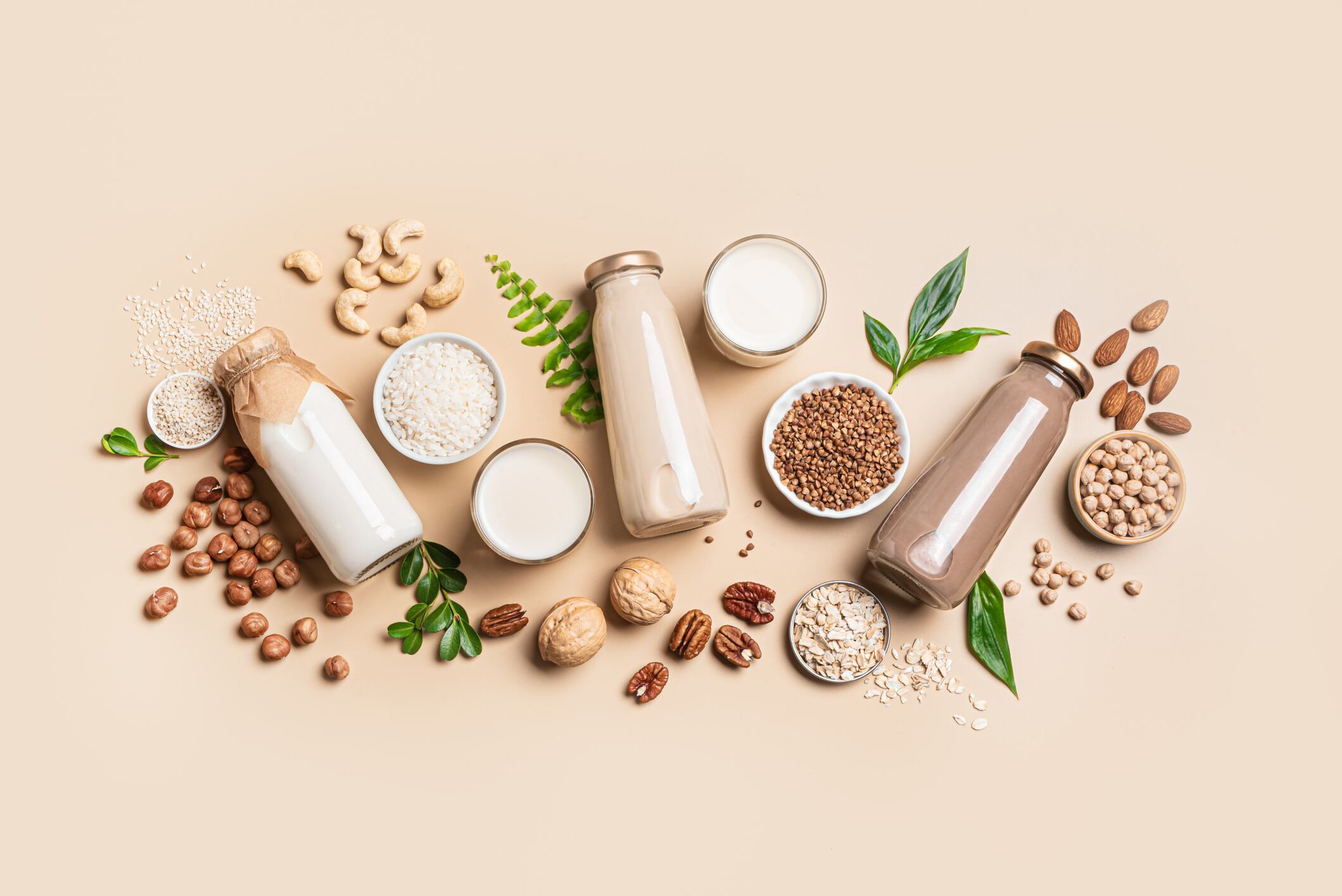In a first of a new article series, we bring you bite-sized B2B insights from market intelligence companies on some of food and beverage’s biggest trends.
In this instalment, Caroline Roux, consultant analyst at Mintel, explains how gut health, GLP-1 medications and alternative protein innovation is helping shape the food and beverage industry.
Alternative protein
“With now-established taste credentials, dairy alternatives can deliver ‘craveability’ and affordability,” Roux told us. “According to Mintel’s data, nearly half of Gen Z consumers in Europe agree that non-dairy yogurt or yogurt drinks taste just as good as dairy versions.”
Crafting premium plant-based products is the next frontier of innovation – and can help turn doubters into believers.
“Indulgent dairy alternatives will appeal to loyal consumers and encourage hesitant ones to re-appraise the taste of dairy alternatives,” Roux added.
One such example is from US company Califia Farms, which recently branched into fruit juices.
“Califia Farms Creamy Refreshers can inspire other dairy alternatives brands to offer low-sugar options that combine indulgent, creamy textures with emerging flavours, all while offering additional value through functional benefits like hydration or added nutrients,” Roux said.
Alternative proteins will be increasingly used in bars and restaurants, Roux predicted.
“Dairy alternatives can also give alcoholic beverages a touch of luxury. With recent egg shortages impacting the availability of egg-white-based cocktails, plant-based alternatives will be used to replicate the creamy texture in cocktails.”
Want an alt dairy deep-dive?
For more insights on dairy alternatives innovation - including emerging spaces like hybrid or precision fermentation - look no further than our annual and much-anticipated Dairy Alternatives webinar, now available on demand. With speakers from Rude Health, ImaginDairy and PlanetDairy and insights on EU policy, it's an information-packed session you don't want to miss - and it's just a click away.
Gut health
The impact of the gut microbiome on holistic health is a growing knowledge area across science and the food industry at large – and in product development, innovation is fast-moving from gut health support to hormonal health.
“Attention to hormonal health will put liver health in the spotlight,” Roux said. “Seeking a first-to-market advantage, dairy brands can ambition to ‘own’ liver health. They will have to educate consumers on the role of the liver in regulating hormone balance.
“Detox organs – such as the liver and kidneys – are important in regulating hormone balance by detoxifying and eliminating excess hormones. Solutions that improve hormone regulation can tackle issues related to sleep, stress, pollution, and hormone changes due to age or disease.
“Liver health is quietly part of current health trends, such as clean diets and sober-curious lifestyles; but on-pack mentions related to liver health are niche.
“Moreover, as environmental toxins become a new ‘clean label’ criteria, dairy brands will test their products for PFAs, and help consumers care for their liver health to detoxify.”
How else can dairy brands tap into hormonal health? “Dairy brands can help women understand the interactions between hormonal changes and digestion.
“Through education, yogurt can play a supportive, curative role in managing women’s digestive issues induced by hormonal changes. Brands can also promote cycle syncing, which involves adjusting nutrition and lifestyle according to the menstrual cycle’s phases.”
Weight management
Dairy is already well-positioned to take advantage of the growing weight management trend thanks to its satiety-enhancing qualities – with nutrient-dense products such as Greek yogurt experiencing a resurgence and formats like RTD dairy beverages also seeing an uptake.
“In the US, dairy brands are already feeling the effects of GLP-1 medications, prompting them to launch products tailored for users (e.g., Danone’s Oikos Fusion),” Roux said.
“As the connection between food and medicine strengthens, consumers will increasingly prioritize essential nutrients such as protein, fiber, vitamins, and minerals. Dairy products can serve as ‘dietary supplements’ to bridge nutritional gaps for GLP-1 users.”
Many consumers already consume yogurt to boost their nutrient intake, she told us. “For instance, Mintel data reveals that 56% of Chinese consumers view yogurt as a gut health supplement rather than just a snack, and 32% of Brazilian yogurt consumers consider high-protein yogurt a viable substitute for protein supplements.
“Moreover, dairy can help alleviate common medication side effects related to stomach and digestion. To meet GLP-1 users’ digestive needs, brands must pivot from general preventative gut health messages to addressing the immediate digestive issues experienced by consumers.”
So where are the future opportunities for dairy brands wanting to make the most of the trend?
“Significant opportunities exist for developing products aimed at individuals maintaining weight after their GLP-1 journey, as well as those opting for food-based rather than medication-based weight management solutions,” Roux said.
“For example, Nestlé Health Science’s Boost Pre-Meal Hunger Support Nutritional Drink purports to naturally stimulate the GLP-1 response to a meal.”
Want to learn more about weight management in the GLP-1 era?
How is the food industry responding to the rise of GLP-1s like Ozempic or Mounjaro?
From reformulation to portion control, appetite supression to satiety science - the GLP-1 revolution is reshaping how we think about food innovation and weight management.
Join us at our free digital summit to hear from leading experts, brands and researchers tackling the big questions:
- What role can food play in supporting GLP-1 users?
- How are consumer needs and expectations evoling?
- What are the opportunities for innovation?
Weight Management: Food Innovation in the GLP-1 Era will be broadcast 13 & 19 November 2025.




